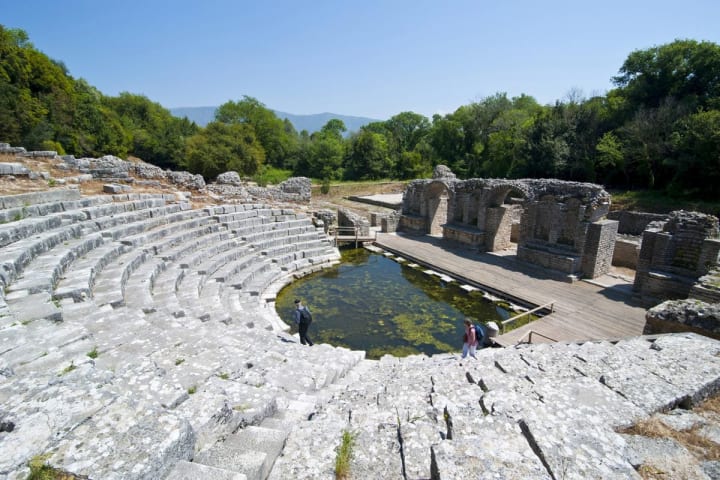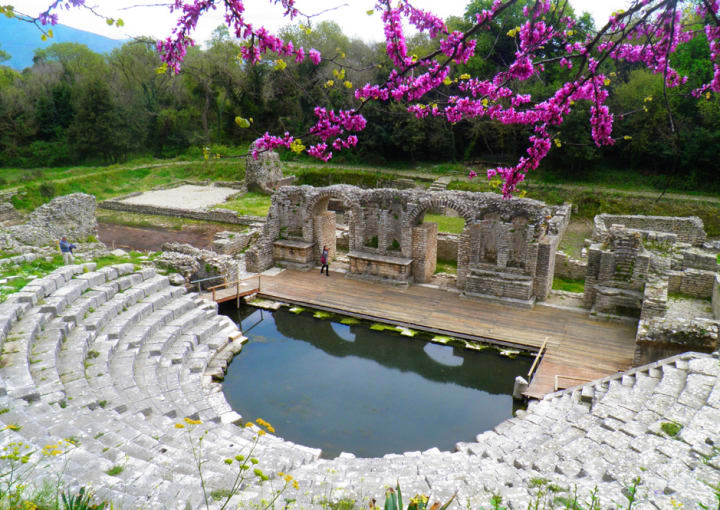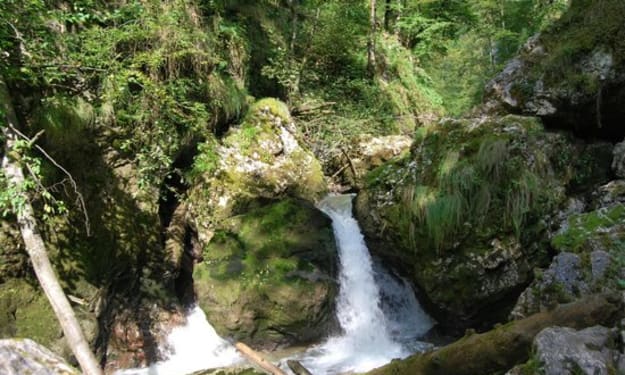The Natural Beauty Of Albania
Two lovely national parks

Lure National Park is located on the eastern slopes of the Lure Mountains. Visitors enjoy taking a look at the towns which are close to this park, like Peshkopi, Fushe-Lure and Sina e Eperme.

Peshkopi is located east of the Black Drin River. Tourists can visit a museum that has a great collection of local costumes, filigree jewelry, carpets, kitchen equipment and local architecture models. There is the lovely Elez Isufuli Boulevard which is a pedestrian street that is lined with Linden trees. Not far from the town are thermal mineral water springs.

Tourists are attracted each year by the twelve lakes found in the park.
There are four principal lakes:
Great Lake
Black Lake
Lake of Flowers
Cow’s Lake

The lakes are located in the northeastern part of the country in the district of Dibra. The lakes freeze over in the wintertime providing natural skiing lanes. The Lake of Flowers is especially beautiful in the summer when you can see large white water lilies making it look like a floating garden.
A meadow known as Field of Mares can be found in the southern part of this national park and in season, there are multi-colored flowers. Everywhere you look are coniferous trees. Lure National Park offers activities for tourists such as different kinds of winter sports, hiking, biking, and horse riding.

The trees which are most common here are Beech trees at lower altitudes. On rocky slopes at higher altitudes, you can see Black Pine, Red Pine and White Pine trees. The forest is home to the rare European brown bear, Eurasian Lynx, Eurasian wolf, European Pine Marten, and Roe deer. The Capercaillie or wood grouse also nests here.
The Butrint National Park

Inside the Butrint National Park in southwestern Albania, you can find the archaeological site of Butrint. In 1948 Butrint’s importance to the cultural heritage of Albania was first recognized and in 1999 the ancient town of Butrint was designated as a World Heritage Site. There are some globally threatened species that can be found near the antique town of Butrint.

The Butrint National Park is comprised of a mixture of natural, semi-natural and artificial habitats. Visitors to the park can find freshwater marshes, reed beds, Mediterranean forests and maquis (shrubland). There are also arable lands and fruit-tree terraces. You’ll also discover coastal waters with rocky and sandy coast. All of these different kinds of habitats shelter a large variety of plants and animals making Butrint one of the most important areas for biodiversity in Albania.
Within Butrint there are 16 endangered kinds of flora and 14 globally endangered species of fauna. Lake Butrint is a wetland area that was shaped by a tectonic lagoon. It is surrounded by mountains, forested hills, and both freshwater and brackish marshes. The lake is connected to the straits of Corfu by the Vivari canal.

Butrint has archeological remains which are a part of the natural woodland. This is a most complex ecosystem which is dependent on the freshwater of Lake Butrint and the Vivari Channel which then drains the lake into the Ionian. What makes this area truly incredible is that the natural environment blends in with a landscape consisting of monuments.

This national park is home to amphibians, reptiles, birds and mammals like the wolf. This is the only site in Albania that is known to support the Epirus water frog, tortoise, sand boa and the Balkan wall lizard.

For the birds here Butrint Bay and the Vrina Marshes provide feeding and roosting grounds. When winter comes there are flocks of waders that make use of the shallow waters among them are the European curlew, redshank, grey plover and dunlin.
Butrint is a microcosm of Mediterranean history. It represents the rise and fall of the great empires which once dominated the area. There are monuments that represent a span of over two thousand years from Hellenic temple buildings that date back to the 4th century B.C. to the Ottoman defences that were created in the early 19th century.

Visitors can see such historically significant archaeological sites as a theater dating back to the 4th century B.C. which seats about 1,500 spectators. Performances are still given here at a festival held each summer. You can also see a very impressive baptistery which has extensive mosaics and basilica dating back to the 6th century A.D. Near the theater, are a canal and vestiges of Roman courtyard houses and a most domineering wall surrounds a great deal of the site.

Of interest is the Butrint Museum which features amazing objects that were unearthed during various archeological digs.
About the Creator
Rasma Raisters
My passions are writing and creating poetry. I write for several sites online and have four themed blogs on Wordpress. Please follow me on Twitter.






Comments
There are no comments for this story
Be the first to respond and start the conversation.